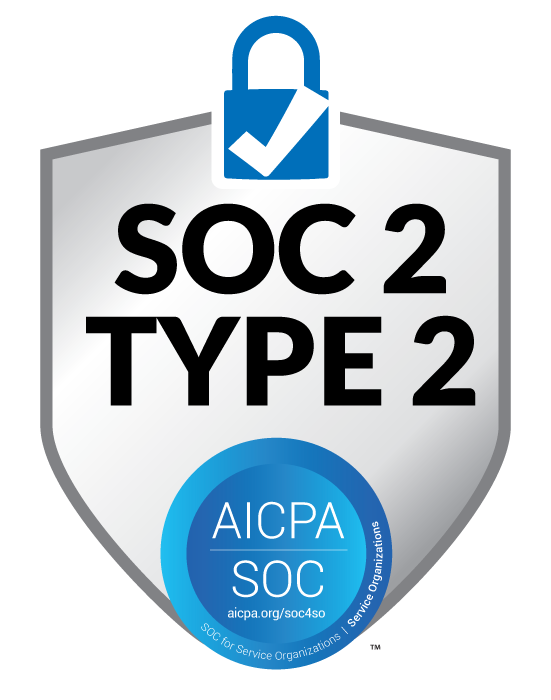Overview
In today’s hyper-connected world, generic marketing content no longer cuts it. Consumers are bombarded with information, and their attention spans are shorter than ever. To stand out, brands must deliver tailored, relevant, and engaging content that resonates on a personal level. Personalized content creation is the key to building meaningful connections, driving conversions, and fostering long-term loyalty. As Satish Ganesan, Customer Success Manager at lowtouch.ai, a no-code agentic platform empowering enterprises to create digital workers for enhanced efficiency and productivity, I’ve seen firsthand how personalization transforms marketing strategies. In this article, we’ll explore the power of personalized content, its benefits, strategies for implementation, and how platforms like lowtouch.ai are revolutionizing the process.
Why Personalized Content Matters in Marketing
Personalization is no longer a luxury—it’s an expectation. According to a 2023 study by McKinsey, 71% of consumers expect companies to deliver personalized interactions, and 76% get frustrated when they don’t. Personalized content speaks directly to individual needs, preferences, and behaviors, making customers feel valued and understood. This approach not only boosts engagement but also drives measurable business outcomes.
Benefits of Personalized Content Creation
- Increased Engagement: Tailored content captures attention by addressing specific pain points or interests, encouraging users to interact with your brand.
- Higher Conversion Rates: Personalized calls-to-action (CTAs) can increase conversions by up to 202%, according to HubSpot.
- Improved Customer Loyalty: When customers feel understood, they’re more likely to return, fostering long-term relationships.
- Enhanced ROI: By targeting the right audience with the right message, brands reduce wasted ad spend and maximize marketing efficiency.
- Competitive Advantage: In a crowded market, personalization sets your brand apart, creating a memorable customer experience.
The Building Blocks of Personalized Content Creation
Creating personalized content requires a strategic blend of data, technology, and creativity. Here’s how to lay the foundation for a successful personalization strategy.
1. Leverage Data for Deep Customer Insights
Data is the backbone of personalization. Understanding your audience’s demographics, behaviors, and preferences allows you to craft content that resonates. Key data sources include:
- CRM Systems: Platforms like Salesforce or HubSpot store customer information, purchase history, and interactions.
- Website Analytics: Tools like Google Analytics reveal how users navigate your site, what they click on, and where they drop off.
- Social Media Insights: Platforms like X provide real-time data on audience sentiment and trending topics.
- Surveys and Feedback: Direct input from customers helps uncover their needs and expectations.
By aggregating and analyzing this data, you can segment your audience into personas—distinct groups with shared characteristics. For example, a retail brand might segment customers into “budget shoppers,” “luxury seekers,” and “eco-conscious buyers,” tailoring content to each group’s priorities.
2. Harness AI and Automation for Scalability
Manually personalizing content for thousands or millions of customers is impractical. This is where AI-powered platforms like lowtouch.ai shine. Our no-code agentic platform enables enterprises to create digital workers that automate content personalization at scale. These digital workers analyze vast datasets, identify patterns, and generate tailored content in real time, ensuring efficiency and compliance without sacrificing quality.
For instance, lowtouch.ai can help a marketing team create dynamic email campaigns that adapt based on user behavior. If a customer abandons their cart, the platform can automatically send a personalized email with product recommendations and a discount code, increasing the likelihood of conversion.
3. Craft Compelling, Audience-Centric Content
Personalized content must be relevant, engaging, and authentic. Here are some tips to ensure your content hits the mark:
- Use Dynamic Content: Incorporate variables like first names, locations, or past purchases to make content feel bespoke.
- Tell Stories: Share customer success stories or case studies that align with your audience’s goals or challenges.
- Optimize for Channels: Tailor content for specific platforms, such as short, punchy posts for X or in-depth articles for your blog.
- Incorporate Visuals: Personalized visuals, like customized infographics or videos, increase engagement by 80%, per a 2024 Forrester report.
4. Test and Iterate Continuously
Personalization is not a set-it-and-forget-it strategy. A/B testing, user feedback, and performance metrics help refine your approach. For example, test different email subject lines to see which resonates with specific segments, then use those insights to optimize future campaigns.
Strategies for Effective Personalized Content Creation
Now that we’ve covered the basics, let’s dive into actionable strategies to implement personalized content in your marketing efforts.
1. Segment Your Audience with Precision
Effective segmentation goes beyond basic demographics. Consider behavioral and psychographic factors, such as:
- Purchase History: Recommend products based on past purchases or browsing behavior.
- Engagement Levels: Target highly engaged users with loyalty rewards and less active users with re-engagement campaigns.
- Life Stages: Tailor content for milestones like graduations, weddings, or new parenthood.
For example, a fitness brand could segment its audience into “beginners,” “intermediate athletes,” and “ fitness enthusiasts,” delivering workout plans and product recommendations suited to each group’s skill level.
2. Personalize Email Marketing
Email remains a powerful channel for personalization. Use tools like lowtouch.ai to automate dynamic email content, such as:
- Personalized Subject Lines: Including the recipient’s name or referencing their recent activity can boost open rates by 26%, per Campaign Monitor.
- Tailored Recommendations: Suggest products or services based on purchase history or browsing behavior.
- Behavioral Triggers: Send emails triggered by actions like cart abandonment, website visits, or milestone anniversaries.
3. Create Hyper-Personalized Landing Pages
Landing pages tailored to specific audience segments can significantly improve conversion rates. Use data to customize headlines, CTAs, and visuals. For instance, a SaaS company might create separate landing pages for small businesses and enterprises, highlighting features relevant to each group’s needs.
4. Leverage Social Media for Real-Time Personalization
Social media platforms like X offer a wealth of opportunities for real-time personalization. Monitor trending topics and audience sentiment to create timely, relevant content. For example, a fashion brand could use X data to identify trending colors or styles and quickly launch targeted ad campaigns.
5. Use Video for Emotional Connection
Personalized videos are a game-changer. A 2024 Wyzowl study found that 96% of marketers see higher engagement with personalized video content. Create videos that address customers by name, showcase products they’ve viewed, or celebrate their milestones with your brand.
Overcoming Challenges in Personalized Content Creation
While personalization offers immense benefits, it comes with challenges. Here’s how to address common hurdles:
- Data Privacy Concerns: Ensure compliance with regulations like GDPR and CCPA by obtaining explicit consent and transparently communicating how data is used.
- Resource Constraints: Platforms like lowtouch.ai reduce the need for extensive technical expertise, enabling non-technical teams to create and manage personalized content.
- Content Fatigue: Avoid overwhelming customers with too much content by focusing on quality over quantity and using data to determine optimal send times.
The Role of No-Code Platforms in Personalization
At lowtouch.ai, we’re passionate about empowering enterprises to achieve personalization at scale. Our no-code platform allows businesses to create digital workers that streamline content creation, automate workflows, and ensure compliance—all without requiring coding expertise. This democratizes personalization, enabling marketing teams to focus on strategy and creativity while our platform handles the heavy lifting.
For example, a global e-commerce brand used lowtouch.ai to create a digital worker that analyzed customer data and generated personalized product recommendations across email, web, and social channels. The result? A 35% increase in click-through rates and a 20% boost in sales within three months.
SEO Optimization for Personalized Content
To maximize the reach of your personalized content, incorporate SEO best practices:
- Keyword Research: Use tools like Ahrefs or SEMrush to identify high-traffic, low-competition keywords related to your industry.
- Optimize for Intent: Focus on keywords that align with user intent, such as “personalized email marketing tips” or “how to create tailored content.”
- Use Structured Data: Implement schema markup to help search engines understand your content and improve click-through rates.
- Mobile Optimization: Ensure content is mobile-friendly, as 60% of searches occur on mobile devices, per Google’s 2024 data.
- Engaging Meta Descriptions: Write compelling meta descriptions that include target keywords and encourage clicks.
Measuring the Success of Personalized Content
To gauge the effectiveness of your personalization efforts, track key performance indicators (KPIs):
- Engagement Metrics: Monitor click-through rates, time on page, and social shares.
- Conversion Rates: Measure how many users take desired actions, such as signing up or making a purchase.
- Customer Retention: Track repeat purchases and customer lifetime value.
- ROI: Calculate the return on investment by comparing campaign costs to revenue generated.
Tools like Google Analytics, HubSpot, and lowtouch.ai’s built-in analytics provide actionable insights to refine your strategy.
The Future of Personalized Content Creation
As technology evolves, so will personalization. Emerging trends include:
- AI-Driven Hyper-Personalization: Advanced AI models will predict customer needs with greater accuracy, delivering content before users even realize they want it.
- Voice Search Optimization: With the rise of voice assistants, optimizing content for voice queries will become critical.
- Immersive Experiences: Augmented reality (AR) and virtual reality (VR) will enable brands to create personalized, interactive experiences.
By staying ahead of these trends and leveraging platforms like lowtouch.ai, businesses can future-proof their marketing strategies and maintain a competitive edge.
Conclusion
Personalized content creation is transforming marketing by fostering deeper connections with customers, driving conversions, and boosting loyalty. By leveraging data, AI, and no-code platforms like lowtouch.ai, enterprises can deliver tailored content at scale, ensuring efficiency, compliance, and measurable results. As consumer expectations continue to evolve, personalization will remain a cornerstone of successful marketing strategies. Start small, test often, and let data guide your efforts to create content that truly resonates.
For more information on how lowtouch.ai can help your business achieve personalization at scale, visit our website or contact our team today.
About the Author

Satish Ganesan
Satish Ganesan is a seasoned Delivery Management Professional and a key contributor to a no-code AI platform focused on enterprise automation. With expertise in delivery management, IT operations, and process optimization, Satish helps organizations streamline workflows and achieve operational excellence.
He focuses on bridging technology and business needs, leveraging agentic AI to drive efficiency and innovation. His passion lies in enabling enterprises to adopt AI-driven solutions that automate routine tasks, enhance decision-making, and ensure data privacy, all while integrating seamlessly with existing systems. Through his insights, Satish is committed to helping businesses unlock scalable, secure automation tailored to their needs.




